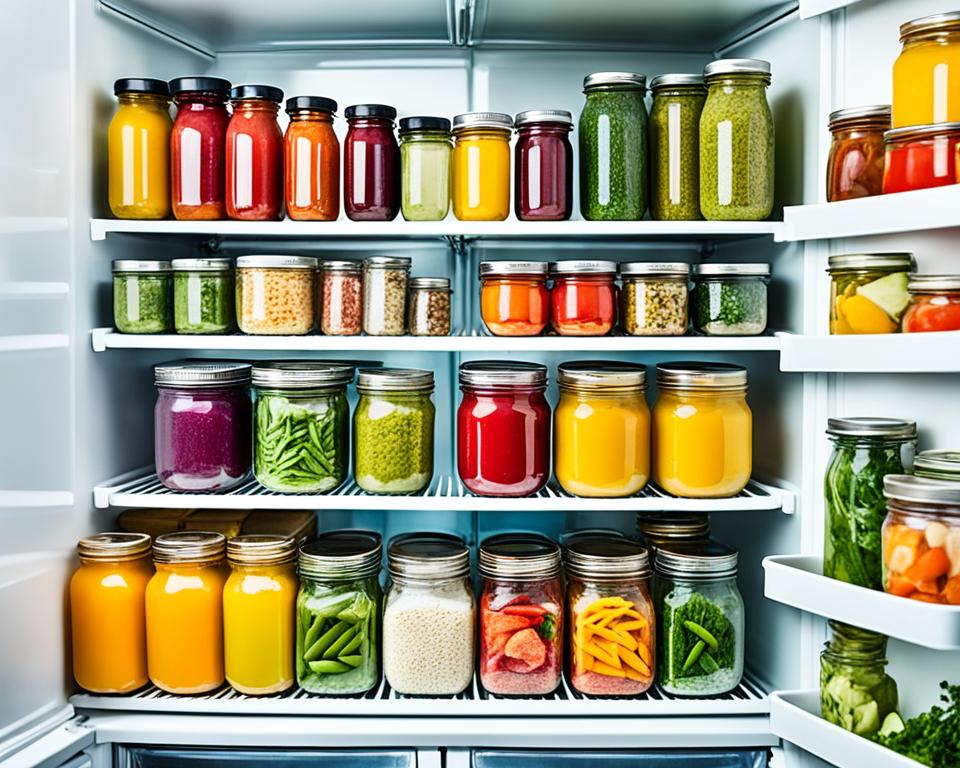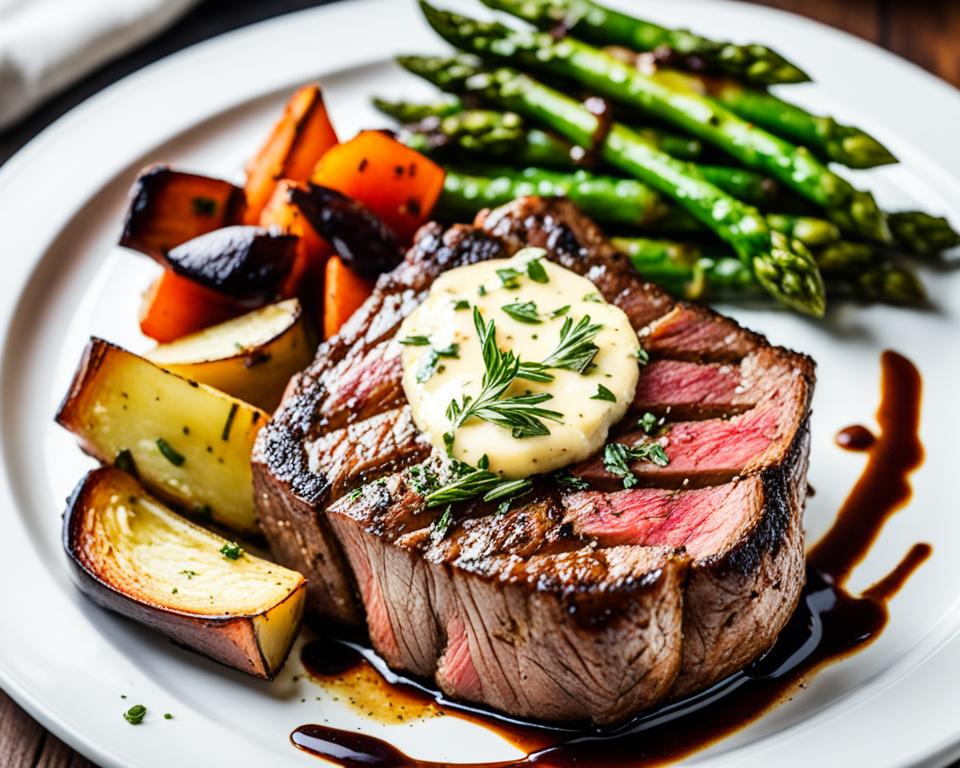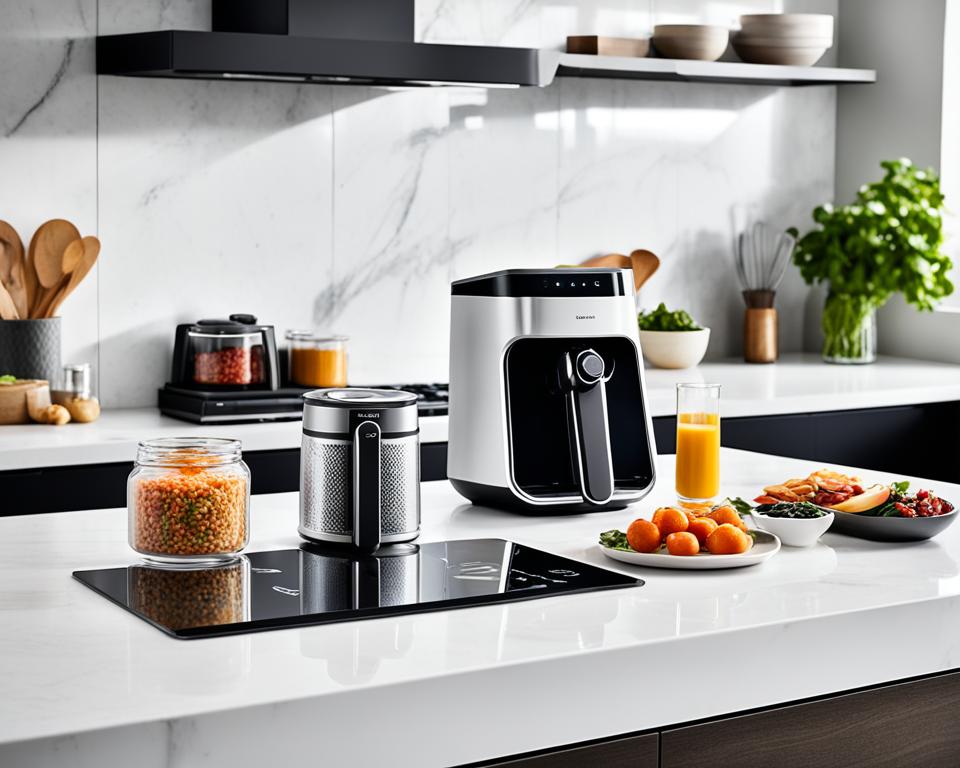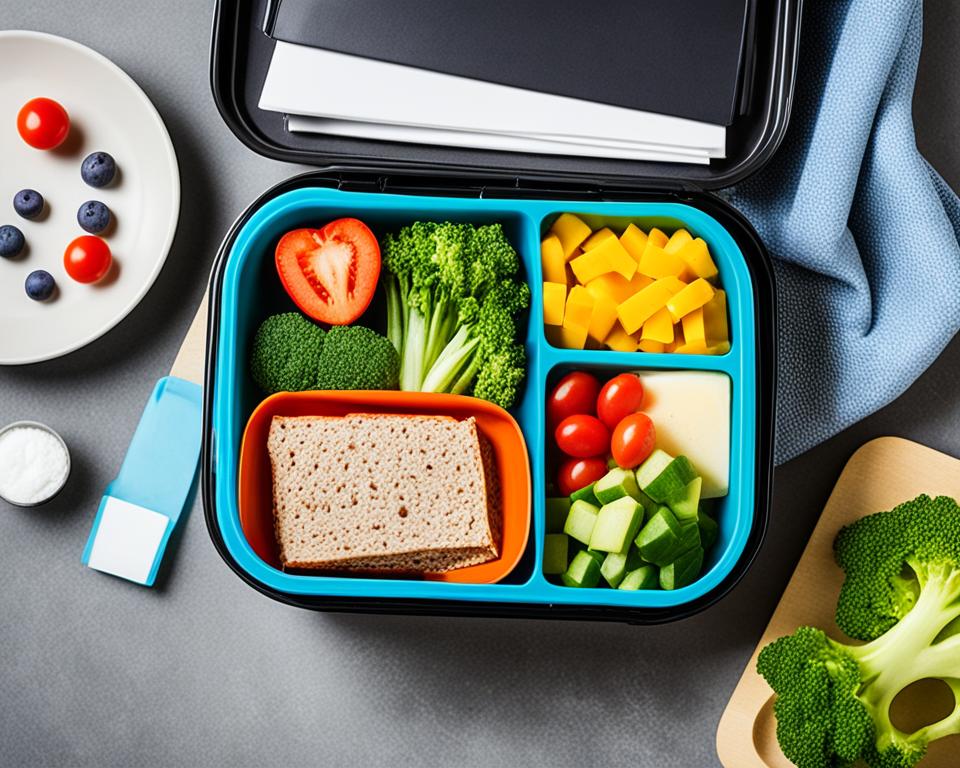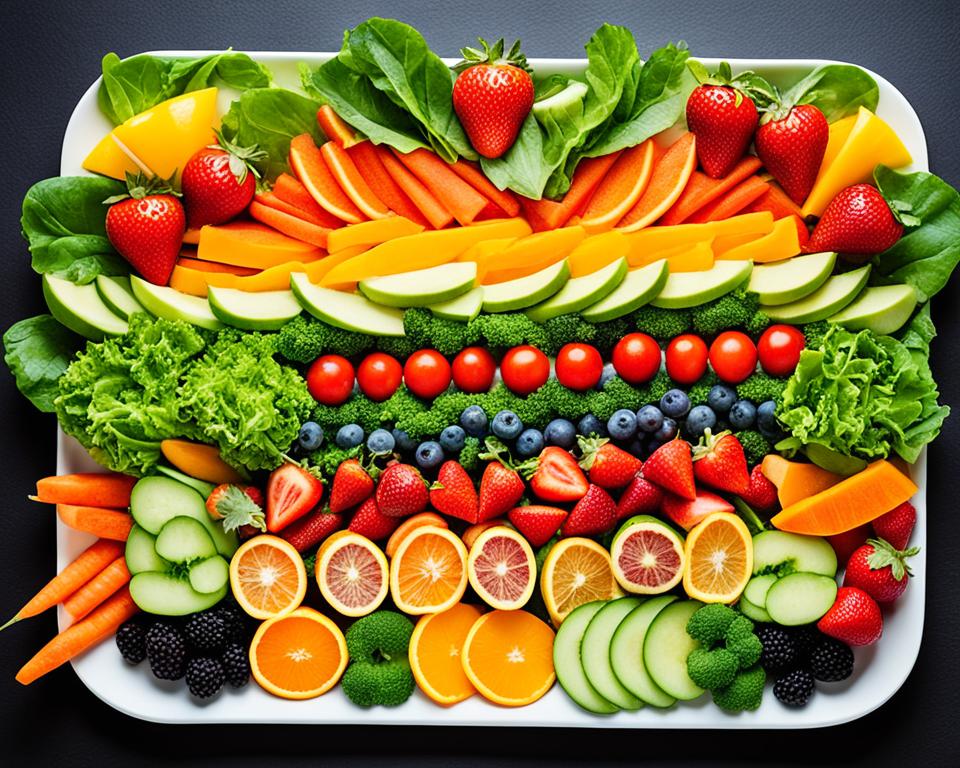Did you know that nearly half of Americans have found overlooked and forgotten items in their fridge in the past month? It’s time to get smarter about using leftovers to minimize waste and maximize flavor. With a little creativity, you can turn those leftover ingredients into delicious meals that are both eco-friendly and budget-friendly.
Key Takeaways:
- Cooking with leftovers is a great way to reduce food waste.
- By planning meals carefully, you can repurpose leftovers and save money.
- Storing leftovers in reusable containers helps minimize waste and keeps you organized.
- Dedicating a leftovers night can clear out your fridge and save you from having to cook a new meal.
- Transforming leftovers into new dishes can be a fun and creative cooking challenge.
Create Leftovers Purposefully
When it comes to minimizing food waste and maximizing your budget, planning meals and using leftovers strategically is key. By thinking ahead and considering how you can repurpose extras, you can not only save money but also reduce food waste. Here are some tips to help you create leftovers purposefully:
1. Prepare Extra Vegetables
When cooking a meal, make a little extra to set aside for future recipes. For example, if you’re making a soup or a pasta dish, prepare twice the amount of vegetables needed and save the extras for later in the week. This way, you’ll have a head start on your next meal and reduce the chances of those vegetables getting forgotten or going to waste.
2. Anticipate Leftover Meat
When roasting or grilling meat, anticipate having leftovers and plan accordingly. For instance, if you’re roasting a chicken, think about using the extra meat to make sandwiches or salads for the next day’s lunch. This not only saves you time and effort but also ensures that no portion of the cooked meat goes to waste.
3. Cook Extra Rice and Freeze It
Rice is a versatile ingredient that can be used in various dishes. When cooking rice, consider making double the quantity you need for one meal. Transfer the extra cooked rice into a freezer-safe container and store it in the freezer. This way, you’ll have cooked rice ready to go for quick and easy meals later on. Freezing rice is a great way to extend its shelf life and prevent it from going to waste.
4. Embrace Creative Cooking
“Cooking is an art, and using leftovers is the equivalent of a blank canvas. You can let your imagination run wild and create something new and delicious.”
Don’t limit yourself to traditional recipes. Instead, view leftovers as ingredients with endless possibilities. For example, transform leftover pasta into a frittata, or use cooked vegetables to make a veggie-packed sauce for pasta. Get creative and experiment with flavors to turn leftovers into exciting and flavorful meals.
To summarize, by planning meals with leftovers in mind, you can save money, reduce food waste, and create delicious meals with minimal effort. Whether it’s preparing extra vegetables, anticipating leftover meat, freezing cooked rice, or getting creative with cooking, every small step goes a long way toward making the most out of your ingredients.
Store Leftovers Smartly
When it comes to reducing food waste, proper storage is key. By utilizing reusable storage containers, you can not only keep your leftovers fresh but also contribute to a more eco-friendly lifestyle.
One smart option for storing leftovers is to use reusable and sustainable glass containers. These containers allow you to see exactly what’s inside, making it easy to identify and utilize your leftovers before they go to waste. Glass containers are also a great alternative to plastic, as they are less likely to stain or absorb odors over time.
For freezing leftovers, consider using washable zip-top gallon bags. These bags are not only convenient but also eco-friendly, as they can be used repeatedly. Label and date the contents of each bag to help you keep track of what you have stored in the freezer.
Properly storing leftovers with reusable containers and bags can help minimize waste by ensuring that you use up every last bit of food. Plus, it’s a great way to stay organized and prevent food from getting wasted or forgotten in the back of the fridge.
Take a look at the table below to see a comparison between reusable storage containers and disposable options:
| Reusable Storage Containers | Disposable Containers |
|---|---|
| Can be used repeatedly | Single-use only |
| Eco-friendly option | Contributes to plastic waste |
| Durable and long-lasting | Prone to cracking and breaking |
| Easy to clean and maintain | Difficult to clean and may stain |
By opting for reusable storage containers and bags, you not only reduce food waste but also make a positive impact on the environment. So, let’s store our leftovers smartly and minimize waste together!
Dedicate a Leftovers Night
Commit to “eating down the fridge” one night a week. This simple practice helps reduce food waste, clear out your fridge, and save money by utilizing leftover ingredients instead of cooking a brand new meal. By dedicating a specific night to leftovers, you can ensure that no food goes to waste while also enjoying a stress-free evening in the kitchen. Plus, it’s an opportunity to get creative and experiment with different flavor combinations.
Why dedicate a leftovers night?
Dedicating a leftovers night has several benefits:
- Reduce food waste: By using up leftover ingredients, you minimize the amount of food that would otherwise end up in the trash. This is not only beneficial for the environment but also for your wallet.
- Clear out the fridge: Leftovers tend to accumulate in our fridges, taking up space and often getting forgotten. Having a designated night to enjoy and finish off these leftovers ensures that your fridge stays organized and clutter-free.
- Save money: Cooking with leftovers means you don’t have to buy additional ingredients for a new meal. This can help save money on grocery bills and reduce food expenses.
On leftovers night, you can simply reheat and enjoy the previous meals or get creative by combining different leftovers to create new dishes. It’s an opportunity to experiment with flavors, textures, and cuisines. Don’t be afraid to mix and match – you might discover some delicious flavor combinations that you wouldn’t have thought of otherwise!
“Dedicating one night a week to leftovers not only helps reduce food waste but also saves you money and encourages creativity in the kitchen.”
Here’s a simple example of a leftovers night menu:
| Leftover Ingredient | Ideas |
|---|---|
| Roasted chicken |
|
| Mixed vegetables |
|
| Steamed rice |
|
Remember, leftovers night doesn’t mean compromising on taste or quality. With a little creativity and some pantry staples, you can transform your leftovers into mouthwatering meals. So, set aside one night a week to embrace the challenge of reducing food waste, clearing out your fridge, and saving money, all while indulging in a delicious homemade meal.
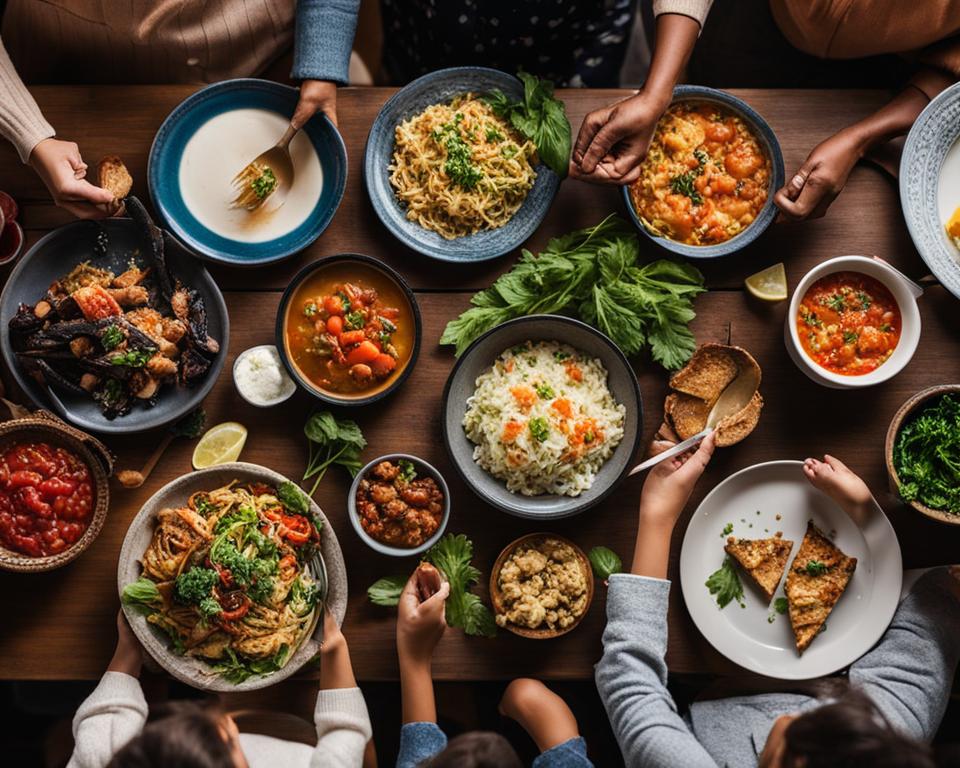
Turn Dinner into Lunch
Don’t let your delicious dinner go to waste! Instead, turn it into a convenient and cost-saving lunch option. By saving a portion of your dinner and packing it in a container, you can enjoy a satisfying meal the next day without spending extra time or money. This simple strategy not only saves you the hassle of preparing a separate lunch but also helps to reduce food waste.
With just a bit of planning, you can create a week’s worth of healthful take-it-to-work lunches using your leftovers. Whether it’s roasted chicken, pasta, or stir-fried vegetables, these meals can be easily transformed into delicious and budget-friendly lunches.
Here are some creative ideas to inspire you:
- Chicken Salad: Shred leftover roasted chicken and toss it with crunchy vegetables, a dollop of Greek yogurt or mayo, and a squeeze of lemon. Pack it with some whole grain bread or greens for a nutritious and filling lunch.
- Pasta Salad: Cold pasta can be transformed into a refreshing salad with the addition of colorful veggies, herbs, and a tangy dressing. Adding some grilled or roasted vegetables enhances the flavors and makes it even more satisfying.
- Stir-Fry Rice: Turn your leftover stir-fried rice into a flavorful and satisfying lunch by adding some protein, like tofu or shrimp, and a variety of vegetables. Sprinkle with soy sauce or your favorite Asian-inspired dressing for an extra burst of flavor.
Incorporating leftovers into your lunch routine not only saves you time and money, but it also helps to reduce food waste. By utilizing what you already have and getting creative with repurposing your dinner, you can enjoy delicious and varied meals throughout the week.
So, next time you’re enjoying a satisfying dinner, remember to save a portion for your lunch the next day. It’s a simple yet effective way to make the most out of your meals while reducing waste and saving both time and money.
Think “Ingredients,” Not “Leftovers”
When it comes to reducing food waste and getting creative in the kitchen, it’s all about changing your mindset. Instead of seeing leftovers as mere remnants, think of them as valuable ingredients waiting to be repurposed into delicious meals. By repurposing leftovers, you not only save money but also contribute to reducing food waste in a fun and creative way.
Here are a few ideas to spark your culinary imagination:
- Create a Frittata: Transform leftover pasta or cooked vegetables into a flavorful frittata. Simply whisk together some eggs, cheese, and seasonings, then combine with the leftovers in a skillet. Cook until set and golden, and you’ll have a satisfying meal that repurposes those leftovers in a whole new way.
- Make a Veggie-Packed Sauce: Blend cooked vegetables with whole tomatoes to create a delicious and nutritious sauce for pasta. This not only adds extra flavor and nutrients to your meal but also helps reduce food waste by utilizing leftover cooked veggies.
- Create Burritos: Use leftover rice, meat, and vegetables to make tasty burritos. Simply wrap the leftovers in a tortilla, add some cheese, salsa, and any other desired toppings, and you’ll have a quick and convenient meal that repurposes your leftovers in a creative and delicious way.
With these simple ideas, you can turn your leftovers into exciting and flavorful meals without letting anything go to waste. Get ready to think beyond “leftovers” and embrace the art of creative cooking!
Make Soup
One of the best ways to utilize leftover vegetables and minimize food waste is by repurposing them into a delicious and flavorful soup. Whether you have steamed, roasted, or grilled vegetables, they can all be transformed into a hearty and nutritious meal.
To make soup from leftover vegetables:
- Puree the vegetables: Combine the leftover vegetables in a blender or food processor and blend until smooth. You can add a bit of broth or water to help with the blending process.
- Warm it in a pot: Transfer the pureed vegetables into a pot and heat on the stove until it reaches your desired temperature. Stir occasionally to ensure even heating.
- Season to taste: Add seasonings and spices of your choice to enhance the flavor of the soup. Common options include salt, pepper, garlic powder, and herbs like thyme or parsley. Adjust the seasonings according to your personal preference.
By repurposing leftover vegetables into soup, you not only minimize waste but also create a flavorful and nutritious meal. Moreover, this eco-friendly approach allows you to fully utilize your ingredients and avoid throwing away perfectly good produce.
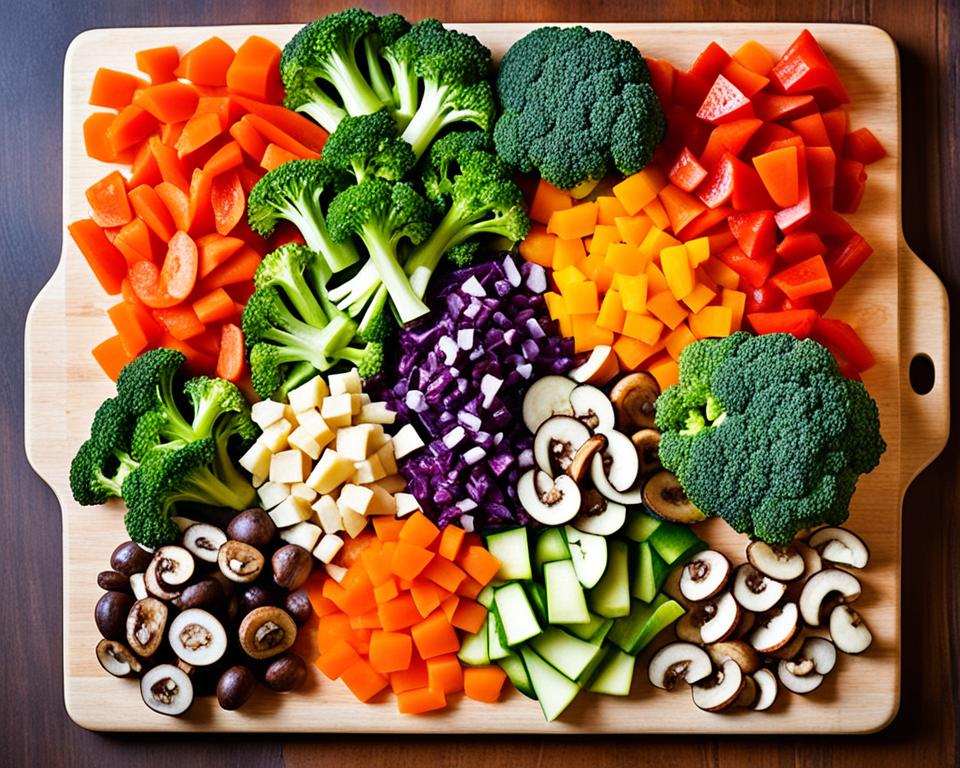
Salvage Stale Bread
Don’t let that stale bakery bread go to waste! Instead, try this Italian technique to repurpose and reduce food waste. Simply follow these steps:
- Halve the stale bread and place it on a baking sheet.
- Drizzle the bread with olive oil, ensuring each piece is coated.
- Rub each piece of bread with a ripe tomato to release its natural juices.
- Season with salt and pepper to taste.
- Wrap the bread in foil, ensuring it is tightly sealed.
- Bake in a preheated oven at 350°F (175°C) for about 10 minutes, or until warm.
This simple method helps to revive the texture and flavor of stale bread, giving it new life and preventing it from ending up in the trash. It’s a great way to reduce food waste and create something delicious. Give it a try!
| Ingredients | Quantity |
|---|---|
| Stale bakery bread | 1 loaf |
| Olive oil | 2 tablespoons |
| Ripe tomato | 1 |
| Salt | To taste |
| Pepper | To taste |
Stash Vegetable Scraps
One effective way to reduce food waste and contribute to a more eco-friendly kitchen is by repurposing vegetable scraps to make homemade vegetable stock. Instead of composting these scraps, you can turn them into a flavorful base for soups and sauces, saving both money and resources.
To start, store the trimmings from your vegetables in a freezer bag. This can include onion peels, carrot tops, celery leaves, and other scraps that would typically be discarded. By collecting these scraps over time, you can accumulate a good amount of ingredients to make a rich and aromatic vegetable stock.
When you’re ready to make the stock, simply add the frozen vegetable scraps to a pot of water. You can also enhance the flavor by including herbs such as parsley, thyme, and bay leaves. Allow the mixture to simmer for a couple of hours, then strain out the solids, leaving behind a delicious and nutrient-packed liquid that can be used as a base for various recipes.
By utilizing vegetable scraps for stock, you not only prevent them from ending up in the trash but also extract maximum flavor and nutritional value from your ingredients. It’s a sustainable and eco-friendly practice that aligns with the principles of reducing food waste.
Benefits of Making Vegetable Stock from Scraps
- Reduces food waste by repurposing vegetable scraps
- Saves money by utilizing ingredients that would have been discarded
- Creates a flavorful and nutrient-rich base for soups and sauces
- Contributes to eco-friendly cooking practices
Example Vegetable Scraps to Use for Stock
| Vegetable | Scraps to Use |
|---|---|
| Carrots | Tops, peels |
| Celery | Leaves, trimmings |
| Onions | Peels, ends |
| Mushrooms | Stems |
| Garlic | Skins |
| Herbs | Stems, wilted leaves |
Conclusion
By getting creative with leftover ingredients, you can significantly reduce food waste, save money, and create flavorful meals. Planning your meals, storing leftovers smartly, and repurposing ingredients are simple and effective ways to minimize waste and make the most out of your food.
With these eco-friendly tips, you not only make a positive impact on the environment but also enjoy the satisfaction of creating delicious and budget-friendly meals. By dedicating a leftovers night, turning dinner into lunch, or thinking of leftovers as versatile ingredients, you can transform your kitchen into a hub of creativity and resourcefulness.
Remember, reducing food waste is not just about being conscious of what goes in the trash; it’s about being mindful of the potential in every ingredient. So, the next time you find yourself with leftover vegetables, meats, or grains, embrace the challenge and let your culinary imagination soar. Together, we can make a difference, one meal at a time.
FAQ
How can I create leftovers purposefully?
When planning meals, think about what the extras can become. Prepare twice the vegetables for a soup or pasta dish later in the week. Anticipate using leftover roast chicken on sandwiches. Cook twice as much rice as you need and freeze the extra for later use.
What are some smart ways to store leftovers?
Use reusable and sustainable glass storage containers to store leftovers. They allow you to see what’s inside and prevent losing track of leftovers. For freezing, use washable zip-top gallon bags and label and date the contents.
How can I dedicate a night for leftovers?
Commit to “eating down the fridge” one night a week. This helps minimize food waste by using up leftover food. It’s a great way to clear out the fridge and save money by not having to cook a brand new meal.
How can I turn dinner into lunch with leftovers?
Stash a lunch-able portion of dinner in a container and pack it for lunch the next day. This saves time and effort in preparing a separate lunch. With a bit of planning, you can create a week’s worth of healthful take-it-to-work lunches using leftovers.
How can I think “ingredients” instead of leftovers?
Transform leftover pasta or cooked vegetables into a frittata. Blend cooked vegetables with whole tomatoes to create a veggie-packed sauce for pasta. Create burritos with leftover rice, meat, and vegetables. This approach allows you to repurpose leftovers into delicious and creative meals.
What can I do with leftover vegetables?
Repurpose steamed, roasted, or grilled vegetables into soup. Puree the vegetables with broth, warm it in a pot, and season to taste. This turns leftovers into a flavorful and nutritious meal. It’s a great way to avoid wasting vegetables and create something delicious.
How can I salvage stale bread?
Use stale bakery bread by halving it, drizzling it with olive oil, and rubbing it with ripe tomato. Season with salt and pepper, wrap in foil, and bake until warm. This Italian technique helps to salvage bread and reduce food waste.
What can I do with vegetable scraps?
Instead of composting, keep vegetable scraps to make stock. Store the trimmings in a freezer bag and add them to a pot with water to make homemade vegetable stock. This helps reduce food waste and create a flavorful base for soups and sauces.
How can I make a positive impact on the environment while cooking?
By getting creative with leftover ingredients, you can reduce food waste, save money, and create flavorful meals. Planning meals, storing leftovers smartly, and repurposing ingredients can help minimize waste and make the most out of your food. With these tips, you can make a positive impact on the environment while enjoying delicious and budget-friendly meals.

